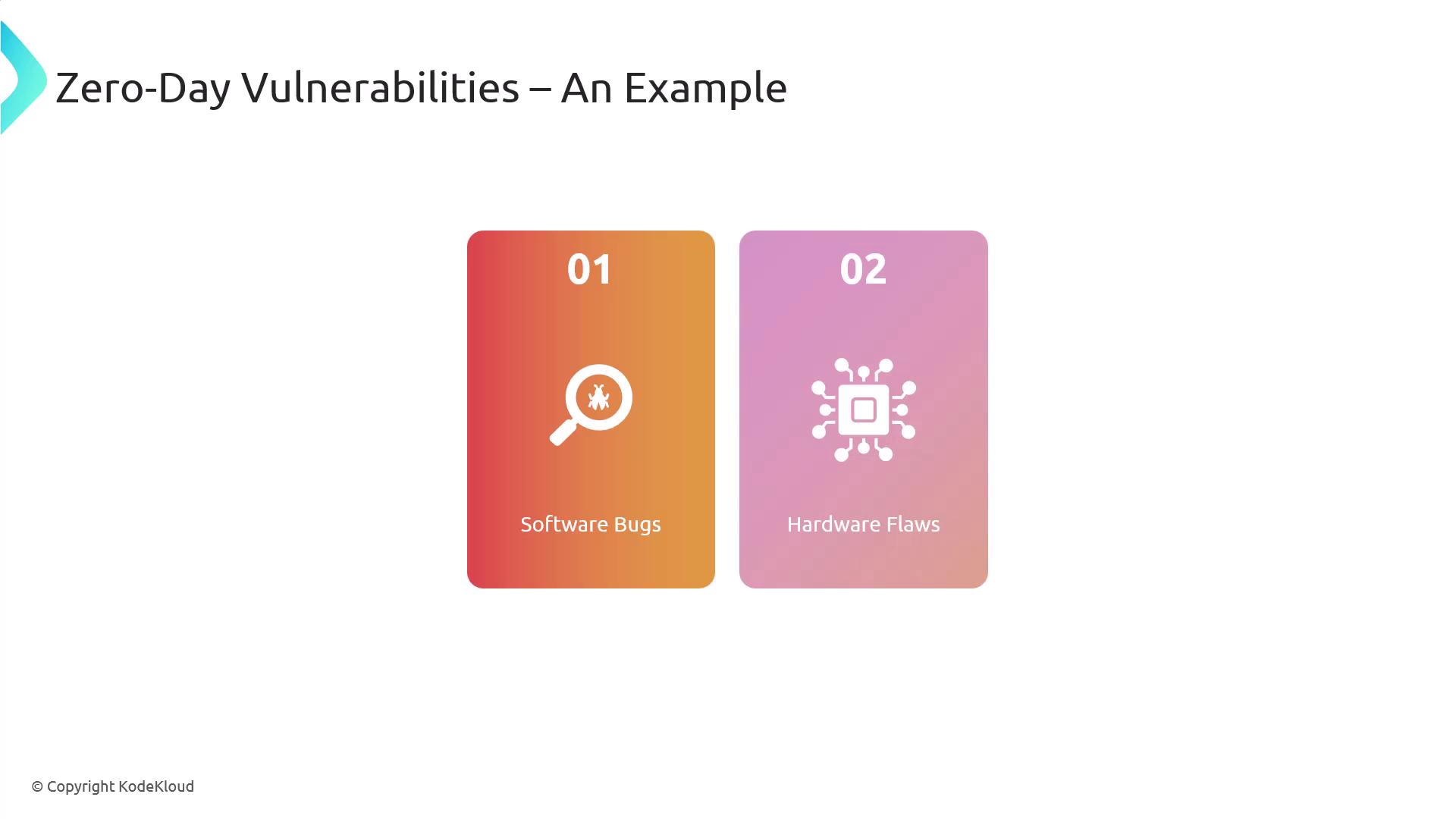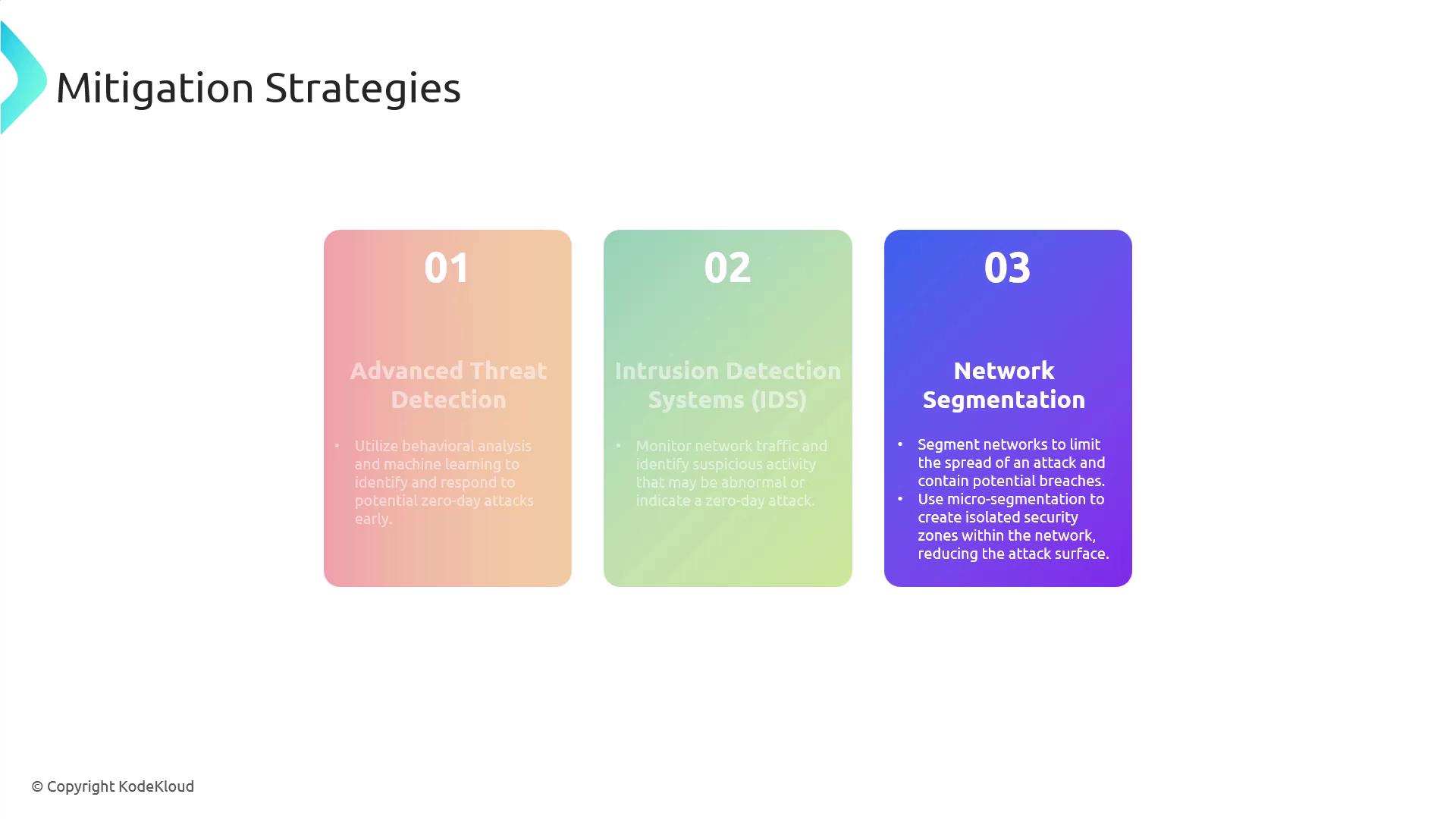CompTIA Security+ Certification
Threats Vulnerabilities and Mitigations
Zero Day Vulnerability
Zero-day vulnerabilities are critical security flaws unknown to software vendors and the public until they are exploited by attackers. These undisclosed bugs provide attackers an opportunity to compromise systems before patches or workarounds are available, often leading to high-impact breaches.

Common Causes of Zero-Day Vulnerabilities
Zero-day vulnerabilities can occur due to various reasons. A typical example is software bugs—unintentional errors or oversights in code that have not yet been discovered. In addition, vulnerabilities may also stem from hardware flaws or issues within firmware components.

Mitigation Strategies
Although immediate fixes may not be available when a zero-day vulnerability is identified, several proactive measures can be implemented to reduce the risk:
Advanced Threat Detection:
Utilize behavioral analysis and machine learning tools to detect and respond to suspicious activities that could signal a zero-day attack. Combining this approach with an Intrusion Detection System (IDS) enhances your defenses by monitoring network traffic for anomalous behaviors.Network Segmentation:
Dividing your network into smaller, isolated segments limits the spread of an attack. Adopting micro-segmentation techniques can further isolate critical systems, reducing the overall attack surface and improving security posture.

Note
Implementing advanced threat detection, maintaining a robust update and patch management policy, and enforcing network segmentation can significantly decrease the risk and impact of zero-day vulnerabilities.
By understanding the nature of zero-day vulnerabilities and implementing these mitigation strategies, organizations can bolster their defenses against potential exploits before effective patches become available. For more in-depth cybersecurity tips and updates, keep following our documentation.
Watch Video
Watch video content